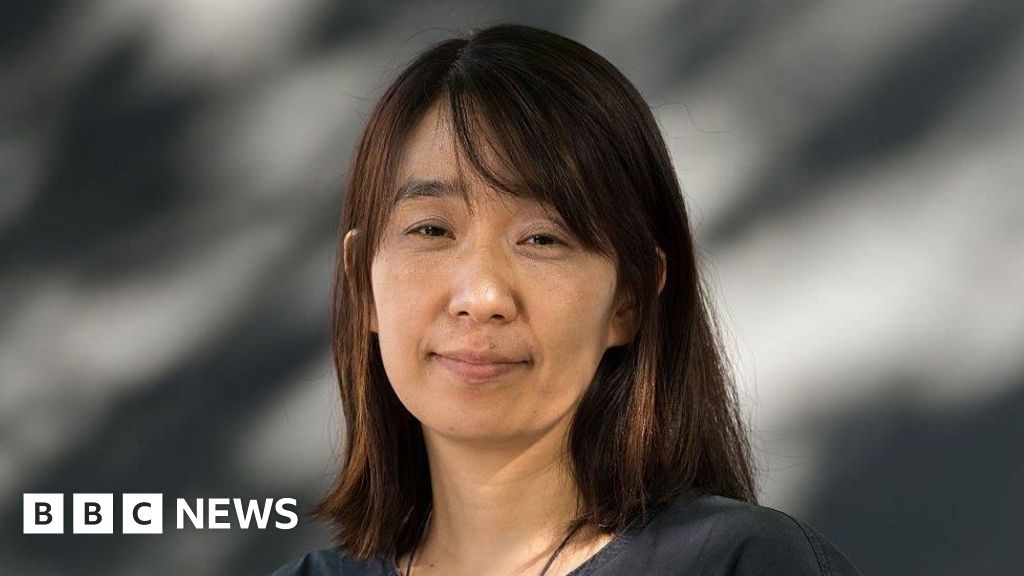Starbucks, Tetley, Jaguar Land Rover: Remembering Ratan Tata’s global ambitions

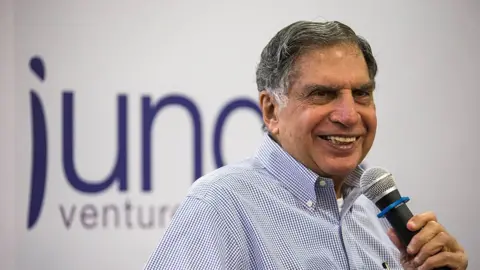 Getty Images
Getty ImagesRatan Tata, the philanthropist and former chairman of Tata Group who has died aged 86, played an instrumental role in globalising and modernising one of India’s oldest business houses.
His ability to take bold, audacious business risks informed a high-profile acquisition strategy that kept the salt-to-steel conglomerate founded 155 years ago by his forefathers relevant after India liberalised its economy in the 1990s.
At the turn of the millennium, Tata executed the biggest cross-border acquisition in Indian corporate history – buying Tetley Tea, the world’s second largest producer of teabags. The iconic British brand was three times the size of the small Tata group company that had bought it.
In subsequent years, his ambitions grew only bigger, as his group swallowed up major British industrial giants like the steelmaker Corus and the luxury car manufacturer Jaguar Land Rover.
While the acquisitions didn’t always pay off – Corus was bought at very expensive valuations just before the global financial crisis of 2007, and remained a drag on Tata Steel’s performance for years – they were big power moves.
They also had a great symbolic effect, says Mircea Raianu, historian and author of Tata: The Global Corporation That Built Indian Capitalism. He adds that they “represented ‘the empire striking back’ as a business from a former colony took over the motherland’s prize assets, reversing the sneering attitude with which British industrialists looked upon the Tata Group a century earlier”.
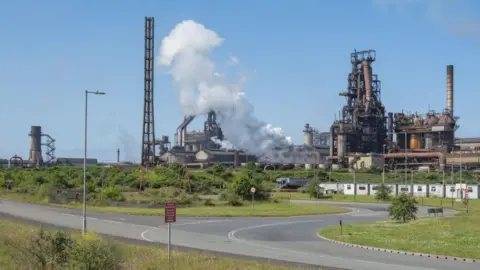 Getty Images
Getty ImagesGlobal ambitions
The Tata Group’s outlook had been “outward-oriented” from the very beginning, according to Andrea Goldstein, an economist who published a study in 2008 on the internationalisation of Indian companies, with a particular focus on Tata.
As early as in the 1950s, Tata companies operated with foreign partners.
But Ratan Tata was keen to “internationalise in giant strides, not in token, incremental steps”, Ms Goldstein pointed out.
His unconventional education in architecture and a ring side view of his family group companies may have played a part in the way he thought about expansion, says Mr Raianu. But it was the “structural transformation of the group” he steered, that allowed him to execute his vision for a global footprint.
Tata had to fight an exceptional corporate battle at Bombay House, the group headquarters, when he took over as the chairman of Tata Sons in 1991 – an appointment that coincided with India’s decision to open up its economy.
He began centralising increasingly decentralised, domestic-focused operations by showing the door to a string of ‘satraps’ (a Persian term meaning an imperial governor) at Tata Steel, Tata Motors and the Taj Group of Hotels who ran operations with little corporate oversight from the holding company.
Doing this allowed him not only to surround himself with people who could help him execute his global vision, but also prevent the Tata Group – protected thus far from foreign competition – from fading into irrelevance as India opened up.
At both Tata Sons, the holding company, as well as individual groups within it, he appointed foreigners, non-resident Indians and executives with contacts and networks across the world in the management team.
He also set up the Group Corporate Centre (GCC) to provide strategic direction to group companies. It provided “M&A [mergers and acquisitions] advisory support, helped the group companies to mobilise capital and assessed whether the target company would fit into the Tata’s values”, researchers at the Indian Institute of Management in Bangalore wrote in a 2016 paper.
The GCC also helped Tata Motors raise money for high-profile buyouts like Jaguar Land Rover which dramatically changed the global perception of a company that was essentially a tractor manufacturer.
“The JLR takeover was widely seen as ‘revenge’ on Ford, which had derisively refused to acquire Tata Motors in the early 90s and then was beaten to the punch on the deal by Tata Motors. Taken together, these acquisitions suggested that Indian corporates had ‘arrived’ on the global stage just as growth rates were picking up and the liberalising reforms bearing fruit,” says Mr Raianu.
Today, the $128bn group operates across 100 countries with a substantial portion of its total revenues coming from outside India.
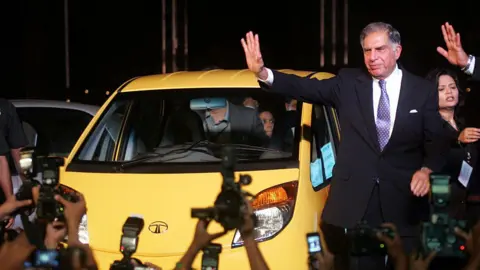 Getty Images
Getty ImagesThe misses
While the Tata Group made significant strides overseas in the early 2000s, domestically the failure of the Tata Nano – launched and marketed as the world’s cheapest car – was a setback for Tata.
This was his most ambitious project, but he had clearly misread India’s consumer market this time.
Brand experts say an aspirational India didn’t want to associate with the cheap car tag. And Tata himself eventually admitted that the “poor man’s car” tag was a “stigma” that needed to be undone.
He believed there could be a resurrection of his product, but the Tata Nano was eventually discontinued after sales plummeted year on year.
Succession at the Tata Group also became a thorny issue.
Mr Tata remained far too involved in running the conglomerate after his retirement in 2012, through the “backdoor” of the Tata Trust which owns two-thirds of the stock holding of Tata Sons, the holding company, say experts.
“Without assigning Ratan Tata blame for it, his involvement in the succession dispute with [Cyrus] Mistry undoubtedly tarnished the image of the group,” says Mr Rainu.
Mistry, who died in a car crash in 2022 was ousted as Tata chairman in 2016 following a boardroom coup that sparked a long-running legal battle which the Tatas eventually won.
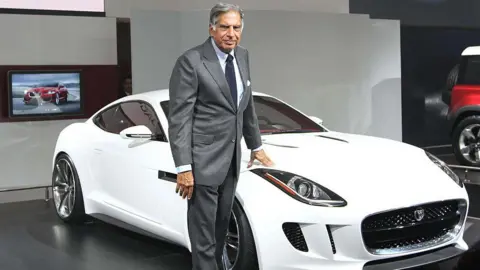 Getty Images
Getty ImagesA lasting legacy
In spite of the many wrong turns, Tata retired in 2012, leaving the vast empire he inherited in a much stronger position both domestically and globally.
Along with big-ticket acquisitions, his bid to modernise the group with a sharp focus on IT has served the group well over the years.
When many of his big bets went sour, one high-performing firm, Tata Consultancy Services (TCS), along with JLR carried the “dead weight of other ailing companies”, Mr Raianu says.
TCS is today India’s largest IT services company and the cash cow of the Tata Group, contributing to three-quarters of its revenue.
In 2022, the Tata Group also brought back India’s flagship carrier Air India into its fold approximately 69 years after the government took control of the airline. This was a dream come true for Ratan Tata, a trained pilot himself, but also a bold bet given how capital intensive it is to run an airline.
But the Tatas seem to be in a stronger position than ever before to take big bold bets on everything from airlines to semiconductor manufacturing.
India under Prime Minister Narendra Modi appears to have clearly adopted an industrial policy of creating “national champions” whereby a few large conglomerates are built up and promoted in order to achieve rapid economic outcomes that extend across priority sectors.
Along with newer industrial groups like Adani, the decks are clearly stacked in favour of the Tata Group to benefit from this.
World News || Latest News || U.S. News
Source link



